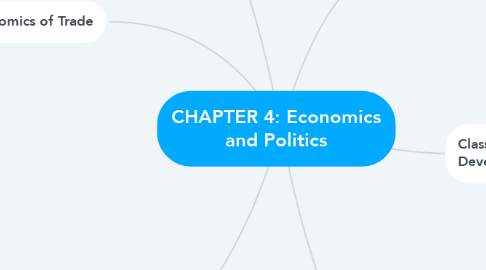
1. The Business Cycle
1.1. The measure of GDP, and is periodic and unpredictable.
1.1.1. Recession
1.1.2. Trough
1.1.3. Expansion
1.1.4. Peak
1.2. Economic Indicators of the business Cycle
1.2.1. Leading
1.2.2. Lagging
1.2.3. Coincident
2. Economics of Trade
2.1. Absolute Advantage
2.2. Opportunity Cost
2.2.1. The value of what is foregone
3. The Role of Government in International Business
3.1. Government Regulations
3.1.1. A registration number
3.1.2. If it a country makes a product or service more productively than other countries
3.1.3. A GST/HST number
3.1.4. A Corporate income tax acount
3.1.5. An import/export account
3.1.6. Payroll deduction information
3.2. Government Embassies, High commission, and Conslates
3.2.1. It's important that Canadians travelling outside if Canada, for business or pleasure, carry the consular info for each country they visit.
3.2.1.1. Embassies
3.2.1.2. High Commissions
3.2.1.3. Permanent missions
3.2.1.4. Consulates general
3.2.1.5. Consulates
3.2.1.6. Consulates headed by honorary consuls
3.2.1.7. Offices
3.3. Trade Missions
3.3.1. Promotes international business through trade missions to other counties
4. Economic and Political Systems
4.1. Political system
4.1.1. the way the government is ran
4.1.1.1. democracy
4.1.1.2. autocracy
4.2. Economic system
4.2.1. the way the country organizes and distributes goods and services to the citizens
4.3. Market economy
4.3.1. Mainly personal use
4.4. Centrally planned economy
4.4.1. Centered around government
4.5. Mixed economy
4.5.1. Owned by both government and personal
5. Classification of Economic Development
5.1. Underdeveloped Countries
5.1.1. Referred as third world countries
5.2. Developing Countries
5.2.1. Referred as emerging counties
5.3. Developed Countries
5.3.1. Referred as industrialized nations
5.3.2. Strong GDP
6. Corporation Influence on Government
6.1. Ways to corporations influence government
6.1.1. Corporations would contribute large amounts to support political campaigns
6.1.2. Companies support politicians who will endorse lower corporate tax rates.
6.1.3. The participation in Team Canada trade missions
6.2. Lobbying
6.2.1. A process a company with special interest groups or individuals attempt to influence government officials and persuade them to endorse public policy favourable to these groups

